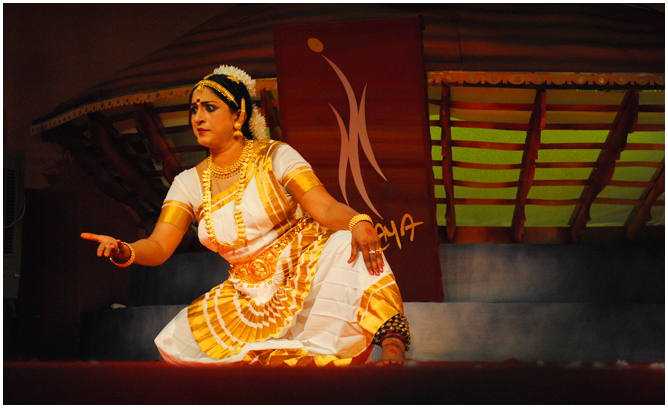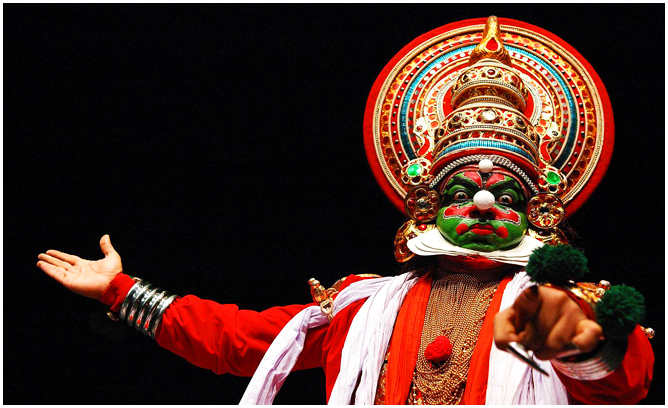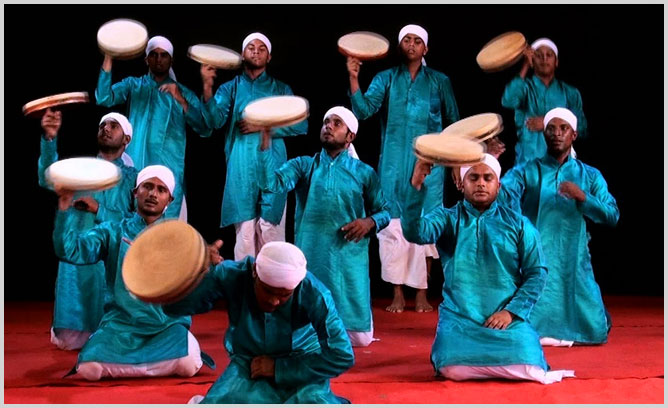Cultural
Artforms
The numerous art forms of Kerala have always made its impact on the rich culture
of Kerala. These art forms have been a part of Kerala's heritage from older times,
the 300 year old dance drama of Kathakali is inspired from the stories of Vedas
and Puranas. The dance form is known for its impeccably intrigue make up and dance
costume. IT mainly focuses on facial and hand movements.
The dance of the enchantress or the Mohiniyattam is another art form of Kerala from
the 19th century. It is a female oriented classical dance evolved during a period
of time. The dance moves are subtle, graceful and magical body movements mesmerising
its audience.
Duffmuttu (also called Aravanmuttu or Arbanamuttu) is a dance type specific to the
Muslim community of Kerala. The origin of Duffmutt is derived from the Arabs in
ancient times and it's still played amid Arabic music. The name Duffmuttu is attributed
to the utilization of instrument associated with it known as Duff. Duff is a round
percussive instrument with one facet coated with hide and is employed to supply
rhythm.
Margamkali is another ancient and creative performance prevailing among the Syrian
Christians of Kerala. The word 'margam' means that 'path' and it absolutely was
meant for the propagation of Christian spiritual concepts.The songs of the Margamkali
is composed in modern Malayalam. The dancers sing themselves while performing the
dance. In contrast to different dance kinds of Kerala, Margamkali lacks musical
accomplishments.
The martial art form of Kalaripayattu bringing the rustic fight moves is one of
the oldest warfare methods known to the human kind. Kalari is the school were the
art form was learned in early period similar to that in gurukul. The Kalaripayattu
is now classified in three styles based on the region. Along with the sophisticated
body moves handling of weaponry and pressure point kicks are also part of the Kalari
style.
Thullal the art form with the sarcastic lyrical verses known as the poor men's Kathakali
is known for its simplistic and frank presentation and witty humour. Mainly it focussed
on the social satire against the feudal lords of early centuries in Kerala.

"The aim of art is to represent not the outward appearance of things, but their inward
significance."
------Aristotle
-
 Back to linksClose
Back to linksCloseMOHINIYATTAM
The dance of the enchantress or the Mohiniyattam is another art form of Kerala from the 19th century. It is a female oriented classical dance evolved during a period of time. The dance moves are subtle, graceful and magical body movements mesmerising its audience. -
 Back to linksClose
Back to linksCloseKADHAKALI
The numerous art forms of Kerala have always made its impact on the rich culture of Kerala. These art forms have been a part of Kerala’s heritage from older times, the 300 year old dance drama of Kathakali is inspired from the stories of Vedas and Puranas. The dance form is known for its impeccably intrigue make up and dance costume. IT mainly focuses on facial and hand movements. -
 Back to linksClose
Back to linksCloseTHULLAL
Thullal the art form with the sarcastic lyrical verses known as the poor men's Kathakali is known for its simplistic and frank presentation and witty humour. Mainly it focussed on the social satire against the feudal lords of early centuries in Kerala. -
 Back to linksClose
Back to linksCloseDuffumuttu
Duffmuttu (also called Aravanmuttu or Arbanamuttu) is a dance type specific to the Muslim community of Kerala. The origin of Duffmutt is derived from the Arabs in ancient times and it's still played amid Arabic music. The name Duffmuttu is attributed to the utilization of instrument associated with it known as Duff. Duff is a round percussive instrument with one facet coated with hide and is employed to supply rhythm.
.png)



